| DP.VII | |
|---|---|
 | |
| Role | Light sports aircraft |
| National origin | Germany |
| Manufacturer | Dietrich-Gobiet Flugzeugwerk |
| First flight | Spring 1924 |
The Dietrich-Gobiet DP.VII was a simple, low power, German sports aircraft flown in early 1924.
| DP.VII | |
|---|---|
 | |
| Role | Light sports aircraft |
| National origin | Germany |
| Manufacturer | Dietrich-Gobiet Flugzeugwerk |
| First flight | Spring 1924 |
The Dietrich-Gobiet DP.VII was a simple, low power, German sports aircraft flown in early 1924.
The low-powered DP.VII was a simple, easily transportable, low-wing monoplane intended to make sports aviation more widely accessible. It had a simple, thick section wing, essentially rectangular in plan apart from blunted, angled tips. This had two main wooden box spars and was braced to the upper fuselage on each side with an inverted V-form pair of struts from the upper fuselage longerons to the spars at about one-third span. Unusually, the one-piece wing structure passed through the deep fuselage above the lower longerons and could be extracted in a few minutes then transported away on a pair of trestles normally stowed inside the DP.VII. The aircraft had long-span ailerons filling about two-thirds of the wing. [1]
The simple, flat-sided fuselage was a steel-tube structure with four longerons, linked by welded struts, defining the shape. Internal piano wire bracing stiffened the fuselage, which was fabric-covered. The open cockpit was over the rear wing and was large enough for a passenger to sit behind the pilot, straddling a box seat. Though the power was low, the structure was light and the load/empty weight ratio (0.89) was noted as high. At the time, the installation of the 22 kW (30 hp) air-cooled Haacke HFM-2 engine was seen as particularly clean, with only the upper cylinders projecting out of the cowling. [1]
The DP.VII's mainwheels were mounted on a single axle, conventionally rubber sprung to a cross member attached to the lower fuselage longerons by a V-form pair of struts on each side. Less conventionally, the undercarriage structure was braced by another, transverse, V-strut from the cross piece centre to the longerons. There was a sprung tail skid at the rear. [1]
The exact date of the DP.VII's first flight is not certain, but the prototype had been well tested by late May 1924 and there were plans to put it into quantity production. [1] At almost the same time, Dietrich-Gobiet were developing the DP.VIIA which, despite the similar designation, was a larger-span, parasol-wing monoplane. It had a similar fuselage and empennage to the DP.VII but a much more powerful engine, a Siemens-Halske Sh 4 five-cylinder radial producing about 41 kW (55 hp). This aircraft was on display at the Third International Aero Show at Prague in early June 1924. [2] Few of either type seem to have been produced. [3]
Data fromFlight, 22 May 1924 p.287. [1]
General characteristics
Performance

The Boulton and Paul P.41 Phoenix, a single-engined two seat parasol monoplane, was aimed at the amateur private flyer and intended to cost less than the successful de Havilland Moth. Despite positive responses from its target purchasers, no orders were forthcoming and only one was built.
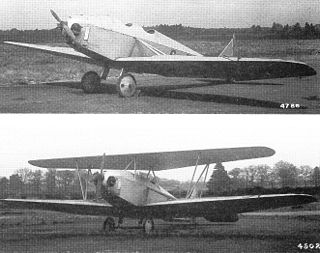
The Parnall Pixie was a low powered British single-seat monoplane light aircraft originally designed to compete in the Lympne, UK trials for motor-gliders in 1923, where it was flown successfully by Norman Macmillan. It had two sets of wings, one for cross-country flights and the other for speed; it later appeared as a biplane which could be converted into a monoplane.
The Dietrich DP.VII was a 1920s German two-seat touring monoplane designed by Richard Dietrich and built by the Dietrich Flugzeugwerke in Kassel, Germany.
The Junkers T 23 was a two-seat, single-engined experimental training aircraft, built in Germany in the early 1920s. It could be configured either as a parasol winged monoplane or as a biplane to compare handling characteristics. 4 were constructed.

The Farman FF 65 Sport was a French built light biplane, with a single engine and tandem seats, intended for sport and touring. First flown in 1919, it achieved modest sales at home and abroad in the early 1920s. Two unusual modifications produced a biplane glider and a low aspect ratio parasol wing machine.
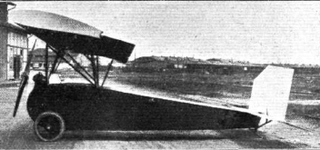
The Albatros L.66 was a simple, low powered, two seat sports and training parasol wing monoplane, built in Germany in the mid-1920s.

The Stahlwerk-Mark R.V, sometimes known as the Stahlwerk-Mark R.V/23 to indicate its year of production, was a small German airliner able to carry three passengers. Two were built.
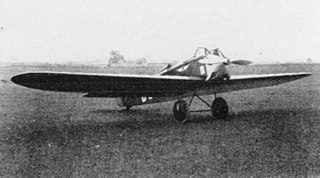
The Udet U 1 was the first of a line of small, low-powered, low wing, cantilever monoplanes built in Germany in the early 1920s.

The Potez 31 was a prototype French two-seat night fighter, flown in about 1928, intended to fill the Cn.2 specification for the Armee de l'Air. Only one was built.

The 1923 Feiro I was the first Hungarian designed and built civil transport aircraft, modified in 1925 by an engine change into the Feiru Daru (Crane). Neither was a commercial success.

The parasol wing, single engine Udet U 8, sometimes referred to as the Limousine, was a three-seat commercial passenger transport designed and built in Germany in 1924. Five were produced and were used by German airlines until about 1928.
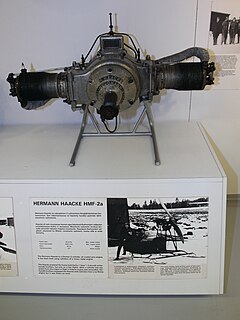
The Haacke HFM-2 was a German two cylinder flat engine built in the early 1920s.

The Hanriot H.34 was a basic trainer designed in France in 1924 which did not reach production. It was a parasol wing aircraft, seating two in tandem.

The Raab-Katzenstein KL.1 Schwalbe (Swallow) was a German two-seat biplane produced in the 1920s. About fifty were built and the type became well known as an aerobatic aircraft, performing at many displays in the hands of pilots like Gerhard Fieseler.

The Gabriel P 5 was the first nationally developed aircraft to fly in Poland after it became independent in 1918. It was an amateur-built, low-powered, single seat parasol wing machine. Only one was completed.
The Gabriel P 6 was a Polish training aircraft and the P 7 a tourer. The difference between them was the wing configuration, chosen to optimise their speed range for their role, so the P 6 was a biplane and the P 7 a parasol wing aircraft.
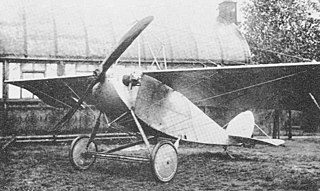
The Silesia S-3 was the first design from the Polish Sopora brothers to fly. It was a low power, single seat, high wing light aircraft. Only one was built and its flying time was limited.
The Silesia S-4 was a Polish, low-power parasol wing aircraft built in 1925. After an engine change and airframe modifications it became one of the Silesian Aeroclubs fleet. It was lost in a take-off accident in 1931 and was the last Silesia aircraft to fly.

The Działowski D.K.D.1 was the first powered aircraft designed by Stanislaw Działowski. It was a low-power high-wing monoplane with a cabin for one passenger. After attending an aviation exhibition in Warsaw in 1927 it was badly damaged when the engine failed as it left and it did not fly again.
The Działowski D.K.D.4 was a Polish, parasol-wing, sports two-seater built in 1928. One won the Second National Lightplane Contest, with another coming fifth.